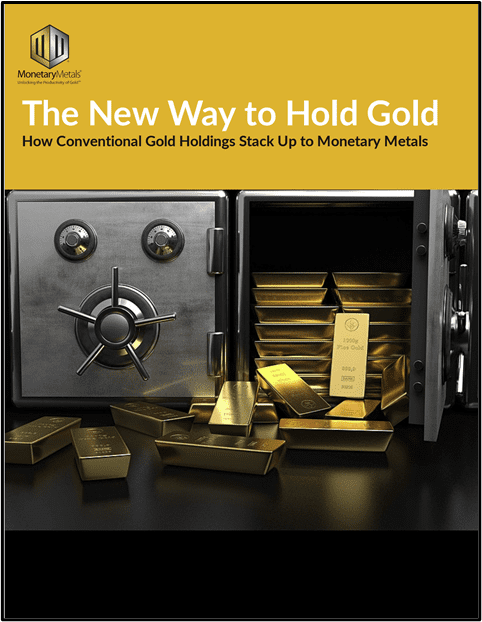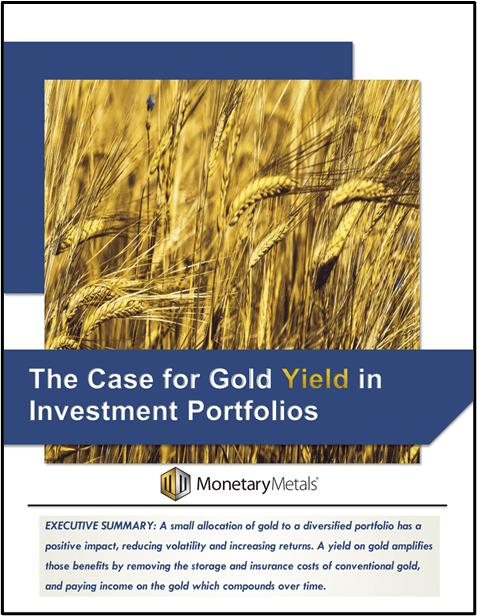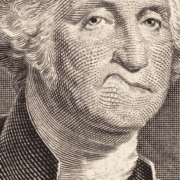Jeffrey Christian: Do Elections Matter?
Jeffrey Christian, Founder and Managing Partner of CPM Group, brings over 40 years of expertise in commodities research and consulting. As a recognized authority on precious metals and economics, he joins the podcast to explore whether elections impact gold prices and to shed light on when inflation exerts a significant influence on the gold market.
Follow Monetary Metals on X: @Monetary_Metals
Additional Resources
How does gold perform during presidential elections?
Earn Interest on Gold and Silver
How to Earn Passive Income in Gold and Silver
Podcast Chapters
00:00 – Politics and Gold
01:00 – Narratives and Oversimplifications about Gold
03:22 – Inflation and Gold Prices
04:52 – Dollar and Gold Correlation
06:22 – Treasuries and Safe-Haven Assets
07:37 – Gold as a Productive Asset
08:05 – Presidential Elections and Gold Prices
09:31 – Politics and Gold
10:28 – Exeter’s Pyramid and Safe Haven Assets
12:25 – Risk-On and Risk-Off Investments
13:06 – Strong Equity Markets and Gold
17:27 – Liquidity of Gold in Market Sell-Offs
18:08 – Central Bank Gold Buying
22:00 – Central Bank Strategies and Market Influence
24:03 – Central Banks as Reserve Holders
26:01 – Historical Context of Central Bank Gold Holdings
28:27 – Diversification of Central Bank Reserves
30:41 – Jeffrey Christian’s Insights on Gold
31:23 – Monetary Metals
Transcript
Ben Nadelstein:
Welcome back to the Gold Exchange podcast. My name is Ben Nadelstein with Monetary Metals. I am joined by Jeffrey Christian. Jeffrey Christian is the founder and managing partner of CPM Group, one of the world’s leading commodities, research, and consulting firms. With over 40 years of experience, he’s an expert on precious metals and economics, and he’s joining us today to discuss gold, silver, and how to make sense of financial markets. Jeffrey, welcome to the show.
Jeffrey Christian:
Oh, thank you for having me. Excuse my sound, a little seasonal head cold.
Ben Nadelstein:
Don’t worry at all. The knowledge is always there, regardless of the cold. Jeffrey, let’s start with some simple narratives that people have about gold. When you’re in the gold business, a lot of people argue, Listen, I don’t need to know all the stuff that you know. All I need to know about gold is that the dollar is being devalued, or we have structural inflation, or this person or that person is going to be in the White House, so gold will go up. In what sense is are these narratives true? And to what extent are they just oversimplifications?
Jeffrey Christian:
Yeah, they’re gross oversimplifications. We can start with inflation. And the relationship between inflation and gold prices is 9%. So it’s a very low correlation. That’s month to month changes in inflation-adjusting gold prices. So it’s a very low correlation. If you look at it over time, gold has tended to actually lose purchasing power in the same way that currencies do. That’s because of inflation, but it’s also because of the fact that gold earns interest. When you have an interest-bearing asset, the underlying amount tends to go down in value just the way Matt, the arithmetic is. High inflation is bad, and a lot of investors will turn to gold and silver to preserve their purchasing power if you have high inflation. Then you have to say, Well, what’s high inflation? In the United States, it’s over 3%, 4%. If you look at the correlation between free gold prices since 1968 and inflation, it was It’s really when inflation was over 7% that it really had a dynamic effect, driving investors into gold, driving the gold price higher. It’s really higher inflation. In other countries, they have different inflationary bases, so it’s even higher levels. We’ve never actually seen hyperinflation in the United States.
We’ve seen high inflation. It got up to 14% in 1979, 1980. But that’s not hyperinflation. And it came off. It got up to 9% in 2021, early 2022, and now it’s a third of what that is. The dollar is a really interesting one because the dollar isn’t losing value. Right now, we’ve got a situation where the dollar and gold are rising. And that’s not surprising to us because we understand the dynamics, and I’ll explain them. Again, the correlation is, I think about 38% or so That negative is 38%, so 34%. So when gold and the dollar are moving in opposite directions a third of the time, Two-thirds of the time, they’re either moving in the same direction or not. There’s just no correlation. Gold and the dollar. If you look at the dollar, the dollar on Friday was up 3% from where it had been 11 trading days earlier. I’m sorry, it was up 1.6% in 11 trading days. It was up 3% from the beginning of the year. So the dollar is not collapsing the way some people will have you think. And what you’re seeing is actually the dollar and gold are both rising at the same time.
And that’s because the dollar and gold are the two most sought-after risk protection assets. When things go bad, people turn to the dollar or to gold, sometimes just to the dollar, sometimes to the gold. Sometimes, as is the case now, they go to both. I sometimes make the joke that the dollar is like your mother. You’ll be on the playground talking trash about how mean she is, but when you scrape your knees, you run to the dollar. And that was the case in 1979, when gold prices went from 190 to 850 over a course of a year, and the dollar rose sharply. People kept saying, Well, the dollar and gold can’t rise at the same time. I would say, theoretically, you may believe that, but they have been rising for the last two months, six months, 12 months in conjunction with each other. That was because investors were so concerned about the political and economic environment. They were racing to the two premier safe haven assets, gold and the dollar. And that’s the situation today. So the dollar is there. And it’s very funny because people will also say that they’re dumping the treasuries. Treasury holdings by non-US investors are at record levels.
And treasury holdings at US investors are at record levels. Investors are moving to the treasures It’s the same rationale. The treasuries have the best credit rating of any sovereign bond. So if you’re worried, you’re getting rid of your sovereign bonds elsewhere, you’re getting rid of your other currencies, and you’re moving into treasuries and the dollar. If you’re smart, you’re also moving into gold.
Ben Nadelstein:
The third factor I wanted to ask you about was something like presidential election years. Many people say, Well, if person X gets into the White House, you know what’s going to happen to gold. And my answer is always, I don’t know what’s going to happen to gold. I wish I did. I wouldn’t be here if I did. I’d be on maybe the Cayman Islands. So is there actually a strong correlation between who is in the White House and the gold price, or is that a myth?
Jeffrey Christian:
I think that’s a myth. If you look at the devolution of the Bretton Woods dollar gold standard, the first leg occurred really under Eisenhower, the second leg occurred under Kennedy and LBJ, and the third leg occurred under Richard Nixon. If you look at the dollar and gold since that time, there really hasn’t been a good correlation. What you can say is that if you have a Republican administration, deficits tend to get larger and the debt grows faster. And that tends to stimulate some investment to me. So you saw that at times in the ’80s, and you saw that in the period 2002 to 2011, and then after that, too, most of which you Republican administration. But there’s no fixed correlation. And what you really have to say is, politics are good for gold. Because I guess the act of being a politician tends to depreciate real assets like other things. So you look for the protection of gold.
Ben Nadelstein:
I remember Thomas Sowell at one point, was writing in one of his books, it might have been Basic Economics, but he’s talking about something about the value of an asset. And he said, For some assets, it’s really clear how the value can be damaged. For example, let’s say you had a piece of real estate and a hurricane came through and destroyed half your house. Okay, well, your house is destroyed. But he said, Let’s say you owned a piece of real estate that you were renting out, and there’s a new regulation saying you’re no longer allowed to rent out your house as a short-term through places like Airbnb. Well, that also hurt the value of your house, but it’s much more difficult to actually see. One of the things you are mentioning, you said people go to these safe haven assets. One of them is the dollar, the other is potentially gold. How do you think about Exeter’s pyramid? And we’ll show that graph for those who don’t know it. But the idea is that people move from farther away derivatives of money, and then in riskier times, try to move closer to what they consider as money.
Where do you see gold and the in terms of Exeter’s pyramid? Do you think that actual relationship exists, where people go from derivatives to closer to something like a base money? Or do you think that’s just a nice graph?
Jeffrey Christian:
I don’t know that theory, but it sounds like it’s an oversimplification and an attempt to take a reality and make it into a meme or a pater noster that you can pray to, whatever. The reality is that when things are going well, people have more wealth and they look to deploy that wealth, and they’re more willing to take bigger risks. When things are bad or getting worse, they tend to pull in their horns. A lot of times, as things deteriorate, their wealth starts to contract, or at least it stops rising as rapidly. So they become more cautious in their investments. You could see that ebb and flow of investment. People on Wall Street talk, I hate the terms, I hate pout and lusters, but risk on, risk off. But when things are looking good, people will invest in stocks because they are more volatile than bonds. When things are looking scary, they’ll invest more in bonds. And if it gets worse, they’ll invest more in treasury bonds than corporate bonds, which is, I guess, one of the things that you’re seeing right now. So there’s a logic and there’s reality there, which is investors are willing to take greater risks in better times, and they’re less willing to take risks in worse times.
That’s the reality. And to distill it into some parlor game formula, I’m just not interested in that.
Ben Nadelstein:
That’s why we love talking to you. You can help us get through the wheat and the chaff here. Okay, question about something you’ve mentioned in other interviews, which is you’ve said actually really strong equity markets or stocks hitting all-time highs isn’t actually necessarily bad for gold. A lot of analysts have looked at you and said, Is Mr. Christian feeling okay? Because isn’t that just basic logic? If stocks are doing really well, gold has to be doing really badly. Can you maybe explain why that’s not necessarily the case?
Jeffrey Christian:
Well, again, if you look at the statistical correlation of changes in the real stock market value versus changes in real gold prices month to month, you find a very low correlation. That’s one of the attractions of gold is it’s uncorrelated. It doesn’t move in the opposite direction. It doesn’t move in relationship over time with stocks. But the logic behind my statement is exactly what I was just talking about, risk on, risk off. If things are going well and investors are taking greater risks and they’re investing more in the stock market and the stock values are rising, investors feel wealthier. If they feel wealthier, they might move more of their assets into gold. If they get to a point, as they are now, but they’ve been for two or three years, where they look at the stock market and they say, The stock market has got to be overvalued. There are all kinds of metrics that you can look at to say it’s overvalued, but it keeps going up. I have a lot of money I’ve made in the stock market, and it’s at risk. I’ve heard on the internet that the stock market could fall 10%, 20%, 40%, 80%.
Some of those guys with the 80% and 40% have been saying that for 40 years, and sometimes they’re right. Then a month later, the stock market jump back up. When you see the stock market looking or perceived as being overbought, then you can see those people buying gold. Now, that’s not true around the world. I’ll tell you an anecdote from China in a few minutes. It is true in the United States and Europe, where you’ll see people shifting their portfolio. It’s not really even shifting their portfolio. Stock prices go up. I’ve got a portfolio and 10% of my portfolio is in gold. The stock market goes up 20%. Now, my gold is 8%, rough man. I need to buy more gold just to maintain that 10% portfolio allocation. In addition to which, I’m now 20% more concerned about the downhill risks in my stock portion. So maybe I’m going to buy extra gold and shift that portfolio. That’s how good investors do. Maybe 20 years ago, we do a lot of work with Chinese companies, institutional investors, banks, government agencies. But maybe 20 years ago, the Chinese stock market was It was just doing fabulously.
Earlier, the gold market had done very well, and everybody in China had poured in the gold. Then the gold market peaked, 2011, 2012, 2013. You had this massive This hoarding of gold by Chinese investors, institutional and private individuals, in 2013. The stock market then started doing very well. I was talking to some of my clients saying, You’ve got a stock market that everybody in the world thinks is grossly overvalued. You don’t have any more gold in your portfolio. Isn’t it time to diversify your portfolio? Chinese institutional investor after Chinese institutional investor said the same thing to me, which is, In China, we’re all in. We will all be all in on the stock market until it starts plunging because we all believe we can be the first one out the door. And so it’s not universal. But in the United States and in Europe and Canada, what you do see is that as the stock market gets into that territory where people are concerned about the value, they will increase the amounts of money in gold and silver.
Ben Nadelstein:
So before we get to silver, I have a A couple more questions on gold. Gold has an incredible liquidity, which means it’s very easy to buy and sell, actually some of the best in terms of assets in the world. How important do you think that liquidity is in terms of market sell-offs? Let’s say the market does go down by 5% in one day. People look at their portfolio and say, Oh, jeez, my portfolio is really taking a hit. I need to get some short term cash. Okay, I’m probably not going to just sell my home to get $20,000. But what I could do is sell of my gold. How important is that in the price of gold in terms of how easy it is to sell a part of your gold?
Jeffrey Christian:
It’s important both as a good thing and a bad thing, if you think in terms of the effects on prices. It’s on the good thing, in those good times when stock prices are rising, people know that gold has this much better liquidity, so they will buy gold as a liquidity store. Then when the market falls sharply, they’ll use that gold to raise liquidity. Now, we always say, Okay, so you’re taking an asset that is doing well, and you’re selling your good asset to get you the cash to meet your margins so you can hang on to the things that are declining in value. It’s counterintuitive to me to sell the things that are doing well so that you can hang on to the things that aren’t doing well. But that’s the way a lot of investors do. You’ve seen this over and over again. You saw it in 1979, 1980. You saw it in ’87. You saw it in 2000, 2001, 2008. When the stock market falls off, you’ll see people rush to gold. Then that gold gets sold to the banks and dealers and brokers and it backs up in the market. So then the gold price comes off.
Ben Nadelstein:
Another question for you in terms of correlations investors may or may not want to be watching, which is central bank buying. So So in the past year, there have been many pundits who have said, Oh, my goodness, look at Central Bank X, look at Central Bank Y. They’ve increased their gold purchases from tons numbers, one, two, three to tons numbers, five, six, seven, eight. Does that actually matter for an individual buying gold thinking, Well, the Chinese Central Bank just bought a lot of gold. Does that actually matter at all? Or is this just a random correlation that really investors should actually pay less attention to rather than more?
Jeffrey Christian:
Central Bank gold buying does matter because it helps support the gold price, and sometimes it helps move the gold price up. The problem is that you have a lot of misinformation and conscious disinformation about Central Bank gold buying. For most of my career, Central Banks were extremely secretive. Starting around over the course of the ’90s, but it really became very prominent in 1999, central banks became much more transparent in their gold management programs and policies and views. It was a conscious decision. It was part parcel with increased transparency across central banking. It actually started in the United States with Paul Volcker and Alan Greenspan in the 1980s, and it’s progressed. Back then, the central bank didn’t tell you what it was going to do? People like me got to guess, but it’s a lot more transparent now. Even with the increased transparency, there’s still a tremendous amount of misinformation. Central banks have been buying gold, but not nearly as much as gold promotional agencies and gold promoters say. In the last six months, really since April and May, central bank gold purchases have fallen very sharply because the gold price has risen and those central banks that were buying, and you have to understand, 180 plus central banks in the world, the purchases have been by 18 to 24 central banks.
So it’s a smaller portion of the total central banks. A lot of those central banks have stopped buying because the price rose. I’m a buyer at 1640 in late 2022. I’m a buyer at 1800 in 2023. But at 26, 2700, I think I’m going to wait. In addition to that, you’ve had the Russian Central Bank buying and selling gold in order to fund its government during time sanctions. You’ve seen periods of time, months, over the last six months, there have been a couple of months where central banks, on a gross basis or a net total basis, were net sellers because some of those central banks weren’t buying, and some of those central banks, Russia, specifically, were selling. It is an important factor, but it’s been overhyped by promoters. There’s another factor, another aspect of it to pay attention to. Central banks are much more price sensitive than private investors. Private investors started stepping up their gold purchases in 2002. Central banks started stepping up their gold purchases in 2006, or 2006, 2007. When the price got over $1,000 in March of 2008, Central banks stopped buying until the price came back down to $900, which was a month later.
But private investors raced in. But it’s important to remember that the central banks are much more cautious investors than private investors. So they’re not going to be the group that drives the price up when the price is rising, and they’re not going to be the group that races for the exit when the price starts falling. That’s all going to be on the private investors.
Ben Nadelstein:
And what is it about the central bank, if you want to call it, price sensitivity or unsensitivity? Because I think I said this to Brent Johnson, who is the inventor of the Dollar Milkshake Theory, and he got a kick out of it, which was that all these people online, the Twitterati, if you want to call them, a lot of times they’re saying, Oh, my goodness, look at what the central bank did. They bought gold, therefore the gold price is going to go up. And I said to Brent, It’s the exact same people who a week earlier are saying, Oh, my goodness, the Fed raised rates or lowered rates. They’re the stupidest people on the planet. I can’t believe that they’re destroying our economy. How don’t they realize that this is going to do X, Y, Z to bond prices? But you can’t have it both ways. It can’t be that the central banks are complete geniuses buying gold, but on the other hand, they’re complete morons when they change interest rates, unless you think there’s a magical gold buying desk where they only hire the smart PhDs, but then the interest rate desk is staffed by morons.
So Are the central banks, what is it about them that makes them sensitive differently than individual investors?
Jeffrey Christian:
Central banks are not investors. That’s the key difference. Investors, smart Part of investors have a investment horizon that stretches from one month to five years. A lot of private equity shops have a three to five year investment window. This thing has to make money within that five year window because I’m liquidating under the structure of my investment within five years. Central banks do not have an investment horizon. They have monetary reserves that they hold forever. It’s their insurance policy. The first thing is to understand central banks are not investing. They are building monetary reserves, which they hold against major financial, political, economic problems. Russia. Russia had very little gold left after the stocks were pillaged in the post Soviet era. They rebuilt them over the Audis. They got up to like 74 million ounces. And now that they’re in war and that 300 billion of their monetary reserves have been frozen, they’re using that gold. That’s the thing a central bank thinks about when they say, Do I need to have gold? So that’s the first thing. The second thing is you’ve got this situation among central banks. The big central banks from the industrialized world, Germany, France, the United States, UK, countries that were major trading entities during the Bretton Wins gold dollar standard, they have a lot of gold, or they They still have a lot of gold.
But in 1971, when we went off the gold standard, prior to 1971, every month, they would say, Okay, Americans bought a bunch of stuff and imported it from our country. They paid for it in dollars. Here’s my dollars. You say the dollar is worth $35 an ounce. Give me your gold. And the treasury had this rain where you saw enormous amounts, tens of millions of ounces of gold coming out of the treasury in 1966, ’67, and the the first four months of ’68 before we closed that window. That’s where the central banks got that. And those industrialized central banks had 80, 90, 95, 97% of their monetary reserves in gold. Meanwhile, other countries weren’t trading a lot. But over the course of the ’80s, ’90s, ’80s, Asian tigers, Latin America, some African countries like Nigeria, Angolia, and South Africa started doing more trading. They were net exporters primarily, and they built up enormous dollar reserves. So that by the time you got to, say, 2000, you could pick any time, you had a handful of industrialized nation’s banks with 90% of their money in gold, and you had the majority of industrialized countries with 90% of their assets in dollars.
Both of them said, We need to diversify. Why? The industrialized central banks were selling gold to build up dollar reserves, and the Asian and other emerging nation’s central banks were selling dollars and buying gold. It was the same impulse, but it was manifested in different ways. And that continues to be the situation. And the dollar reserves, we only have data going back to 1993. And with the exception of the rush into the dollar during the move to the Euro in 1999, central banks have had about 58 to 62% of their foreign exchange reserves in the US dollar. It’s Still about that. They may have dropped down to about 57%, but central bank’s dollar holdings have been very stable. If you look at their other holdings, their golden holdings have risen. Their holdings in other countries’ currencies have gone from virtually nothing to about 10% of their foreign exchange reserves. Where that 10% came from was the Euro. If you go back 20 years A few years ago, the Euro was about 20% of central bank monetary reserves. Now, it’s about 10%. I think those are the numbers. You’ve seen a shift away from the Euro into other currencies than gold.
There’s a desire to not keep adding your dollars to your reserves. Those countries that are running trade surpluses will tend to take those surpluses and parts it out buying other countries’ currencies and gold, as opposed to the dollar and the Euro. And they never quite get around to liquidating their capital stock of the because you can only buy so much of these illiquid other countries’ currencies and gold before you start having an effect on the price.
Ben Nadelstein:
I feel like I’ve just been through a master class in gold. Jeffrey, where can people find more of your work if they’re interested?
Jeffrey Christian:
Well, cpmgroup.com is our website. You can go to YouTube. We post free videos twice a week, typically twice a week, Tuesdays and Fridays. We have a variety of research and consulting services that you can read about at our website, cpmgroup.com. You can send us an email at info@cpmgroup.com saying, How can you help me?
Ben Nadelstein:
Jeffrey Christian, CPM Group. It’s been an honor interviewing you, and we look forward to seeing more of your work. Thanks so much.
Jeffrey Christian:
Thank you for having me!
Additional Resources for Earning Interest in Gold
If you’d like to learn more about how to earn interest on gold with Monetary Metals, check out the following resources:
In this paper, we look at how conventional gold holdings stack up to Monetary Metals Investments, which offer a Yield on Gold, Paid in Gold®. We compare retail coins, vault storage, the popular ETF – GLD, and mining stocks against Monetary Metals’ True Gold Leases.
The Case for Gold Yield in Investment Portfolios
Adding gold to a diversified portfolio of assets reduces volatility and increases returns. But how much and what about the ongoing costs? What changes when gold pays a yield? This paper answers those questions using data going back to 1972.













Leave a Reply
Want to join the discussion?Feel free to contribute!